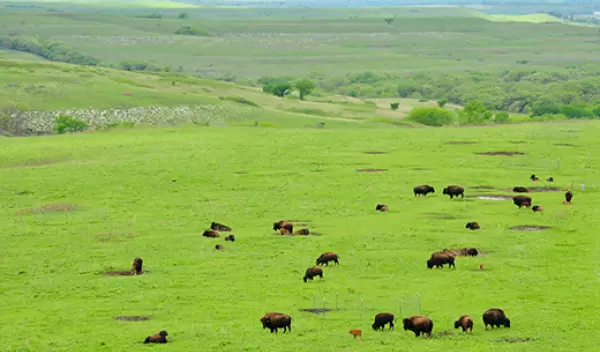
Reintroducing bison to grasslands increases plant diversity, drought resilience, study finds
A Kansas State University-led study has found that reintroducing bison — a formerly dominant grazer — doubles plant biodiversity in a tallgrass prairie. The research includes more than 30 years of data collected at the Konza Prairie Biological Station, a U.S. National Science Foundation-supported Long-Term Ecological Research site, and is published in the journal Proceedings of the National Academy of Sciences.
These gains are now among the largest recorded increases in species richness as a result of grazing in grasslands globally, the researchers said. The study also found that the plant communities were resilient to the most extreme drought in four decades.
"Bison were an integral part of North American grasslands before they were abruptly removed from more than 99% of the Great Plains," said Zak Ratajczak, the lead researcher. "The removal of bison occurred before quantitative records and therefore, the effects of their removal were largely unknown."
The study took place in the Flint Hills ecoregion, the largest remaining tallgrass prairie landscape. Researchers examined plant community composition and diversity in three treatments designed to capture characteristic management regimes: no mega-grazers present; bison reintroduced and allowed to graze year-round; and domestic cattle introduced and allowed to graze during the growing season.
"Our results suggest that many grasslands in the central Great Plains have substantially lower plant biodiversity than would have occurred before bison were wiped out," Ratajczak said. "Returning or 're-wilding' native megafauna could help to restore grassland biodiversity."
The study also found that cattle had a positive impact on plant biodiversity, compared to having no large grazers present, although increases in plant species richness were significantly smaller than those caused by bison.
"This study demonstrates the importance of long-term ecological data and large-scale experiments," said Doug Levey, a program director in NSF's Division of Environmental Biology. "We are so accustomed to seeing prairies without bison that we've overlooked how their reintroduction can have positive effects across the entire plant community. More diverse plant communities lead to more diverse communities of insects, birds and mammals."
